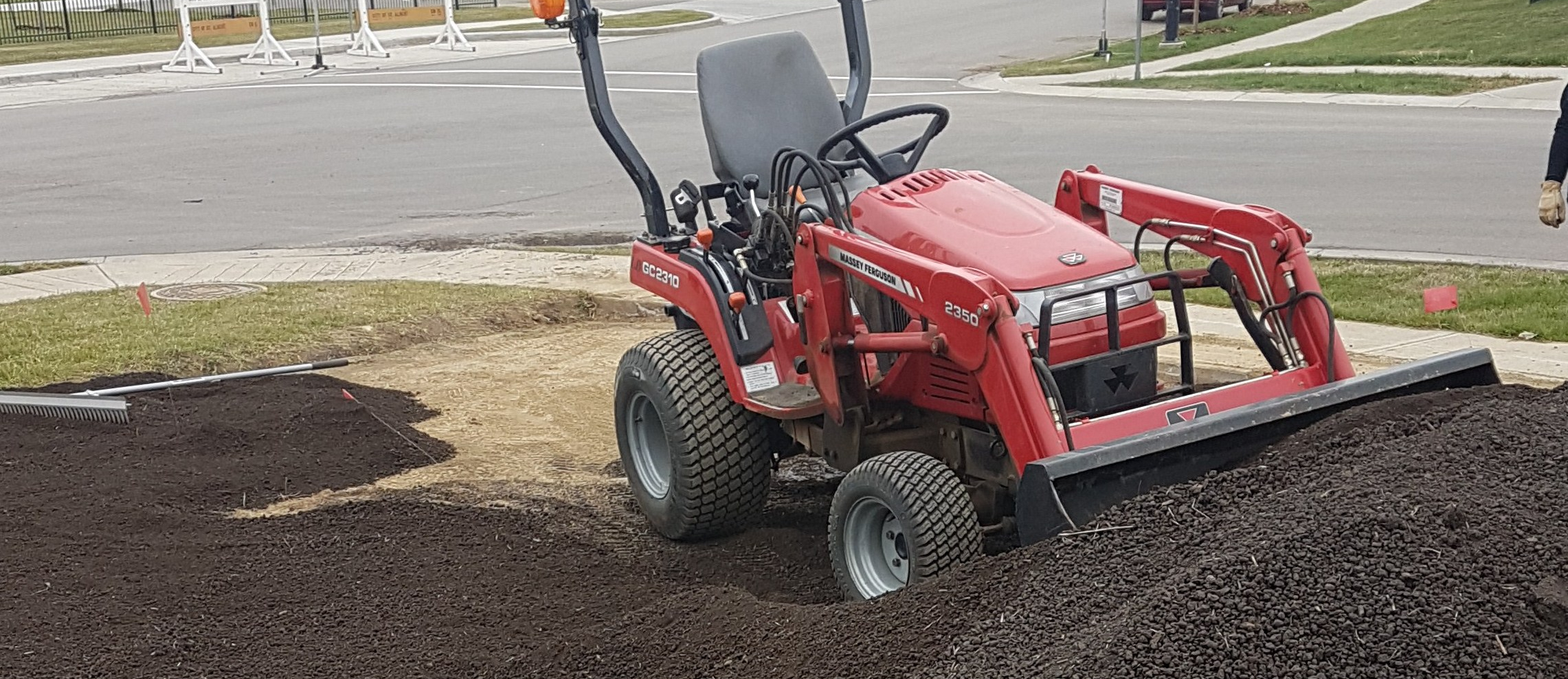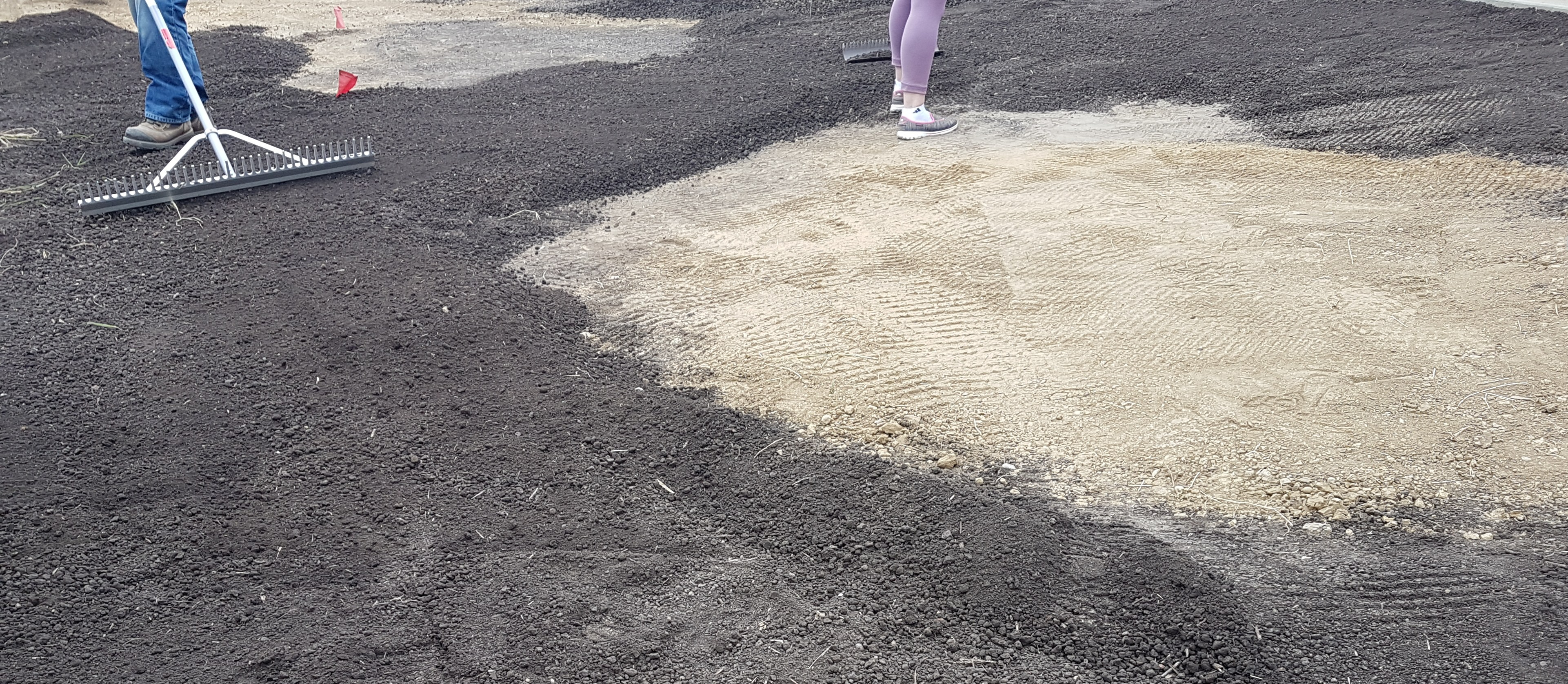


 Hey Guys!
Hey Guys!
If you’re like me and you’re living in one of the colder regions of the world, you’re going to see this post and laugh to yourself because there’s still like eight feet of snow, five snowstorms to come, a period of freezing and thawing combined with mud and some rain to make our ways through before spring even thinks about arriving. But, not everyone lives in places like this, and loads of people who do are still starting to think about and budget their landscaping.
Recently my sister sold her last property and upgraded to a single family home that she had built- which meant a beautiful, dirt filled lot. Just kidding, it meant she either had to sell her soul to pay for landscaping orrrrr roll up her sleeves and get a bunch of the work done herself to save some money. She’s not the devil incarnate, so she rolled up her sleeves and because we’re a family we all did too! (Shoutout to Dad for having the most rolled-up sleeves ever on this one… Dads are the best).
This series is going to be 2-3 parts, and today’s post is going to talk about groundwork, concrete, curbing and rock as well as shrubs. You know, the less exciting stuff that is absolutely fundamental to not having a ratchet looking yard. Not every item discussed in this series is necessary for every yard- it’s just what we did at her house, so I’m including it for information if you find similar things necessary.
Come up with a design and get quotes
Step one is a lot like the “expectation setting” step. I’d like a gold plated backyard please, but I have 12 dollars. Yeah, no. My sister had some ideas for her yard and my parents have done 3-4 full backyard landscaping projects in the past, so they had an idea of the things that were important:
- A concrete patio, with a wheelchair/stroller accessible sidewalk from the front to the back
- A composite deck to get from the back door to the patio
- Concrete curbing (to meet architectural controls in her area)
- Shrubs and trees to meet architectural controls in her area
- A certain percentage of land had to be covered in grass (again, architectural controls
Mom and Dad went to the home and garden show the spring before work was started to get an idea of new products and trends. My sister and Dad went to deck stores and got in touch with contractors my parents have previously worked with to get quotes on materials and labor.
This will help you set a budget and confirm if your expectations are realistic, or if you maybe need to save more before you tackle this project. If you can’t afford that flower bed you really want- that’s ok, you can always do it at a later time.
Costs: $0 (ok gas to drive around)
Dirt (Expert Required)
If you’re like my sister and working on a bare lot, there’s a good chance you need to bring your lot up to grade before you can do much else. My sister’s yard took a LOT of dirt to get it up to grade and graded appropriately to ensure any rain or groundwater flows away from the foundation of her home.
This is a section that is extremely important. If you’re not a seasoned self-landscaper, making an error in grading your yard can literally destroy your foundation over time and/or require you to rip everything out and start from scratch again. While it did save oodles of money to do this ourselves at my sister’s house, it’s not for a weekend warrior. This is where you call an accredited professional or someone with decades of experience (like my dad, but don’t… because he will NOT help you). You can save money later with back breaking work like moving rock and digging your own tree holes.
Please note- if you decide to get your rock and dirt at the same supplier, you could get a discount. Ask!
Costs: Experienced landscaper to do the grading, dirt costs (delivery)
Curbing (Expert Required)
Hire a curbing professional if you want curbing. I can’t even say anything other than this. My sister used Best Curbing in Edmonton and David Best’s experience and design skills really assisted in getting her yard to the finished product you’ll see.
Costs: Curbing expert, materials
Rock (Do-it-Yourself, Delivery)
Guess what, guys? Good rock is expensive! Thank goodness your own manual labor isn’t because this is the first stage where the average joe can save themselves some money and earn some sweat equity. And biceps. And a broken back. You know, all the good stuff.
This step will sometimes have to be paused to provide for concrete if you are getting concrete work done. Basically, the concrete crew will need unobstructed access to frame and rebar any areas where concrete is going down, so your rock and any piles of rock will need to be 6-10 feet away to allow for access. Also, trees and shrubs can’t be complete until rock is done, because trees and shrubs could get in the way of a concrete crew. So you may stop and start doing rock, or do it in stages.
Otherwise, get to rocking in! My dad would haul rock to my sister’s house from the provider, dump it on the driveway and rock would be moved either by hand (with a wheelbarrow) or brought to the back of the property with the tractor. Rock needs to be set and spread with shovels and/or with your hands. Safety tip: when dealing with rock, it’s a good idea to wear a mask and protective eyewear. The dust that comes from rock is actually really awful and can lead to things like scratched corneas and voices that sound like you’re eighty (because you just inhaled twenty pounds of tiny rock particulate).
When it comes to choosing a rock, while round river rock is beautiful, angular rock is actually safer to walk on as it doesn’t roll underfoot. Over time, it packs down nicely and will be safer for kids, those who are less steady on their feet and klutzes like me.
To save yourself a lifetime of weeds, always lay rock over black landscaping fabric you’ve cut to size. Some tips on how to deal with the fabric with shrubs and trees will be in the next post.
Costs: Material (rock and black rockpaper), Delivery of Material (if not included), Tools (wheelbarrow and shovels, leather gloves, protective gear)
Savings Areas: Distributing and setting the rock yourself
Concrete (Professional)
Professional assistance is required for concrete work. There’s no way around it. Improperly framed/rebarred work will fail, and improper chemistry/mixing of concrete (or just using the wrong type in the wrong conditions) will see alllllll your work and money literally crumble in front of you like a disgusting mess. Hire a professional. Depending on your cement guy, you may be able to set and tie your own rebar- this saves you money on labor, but do your homework and talk to your professional.
Costs: Professional concrete work, materials and delivery
Savings Areas: Talk to your professional about sealing your concrete yourself, as well as placing and tying your own rebar. Do not attempt to cut concrete yourself as it requires specialized equipment..
This stage of the work seriously takes the most time and it seems like you need to hire assistance for all of it, and you will feel like you’re spinning your wheels for half of your life and it will probably suck. But, this is the most important stage when it comes to having a beautiful, safe, long lasting landscape you can be proud of.
Keep your eyes peeled for part two coming soon, where there will be LOADS of opportunities to save money by doing things yourself! Please let me know if there are any questions about what’s been talked about in this first part of my affordable landscaping series.





Comments are closed.